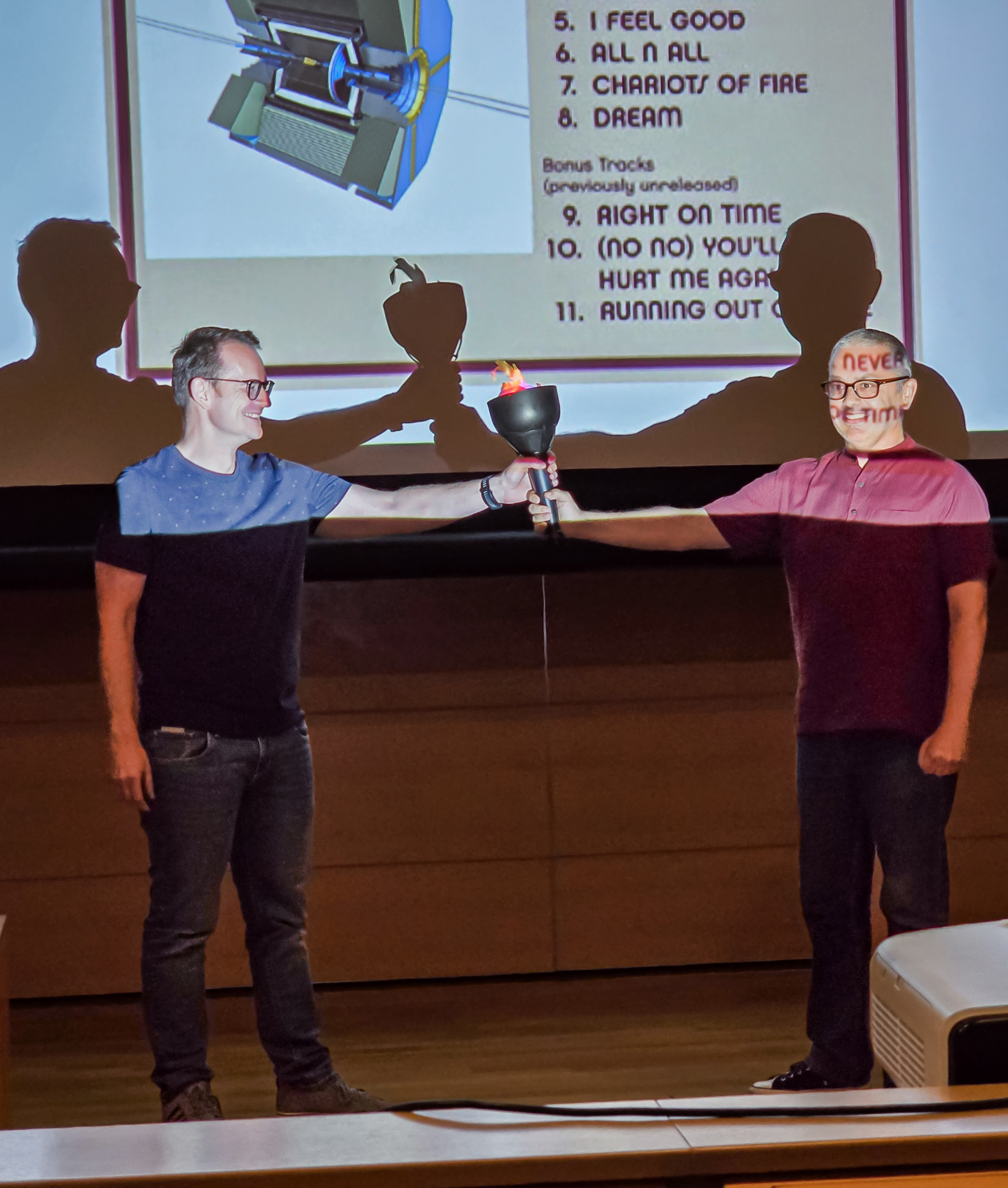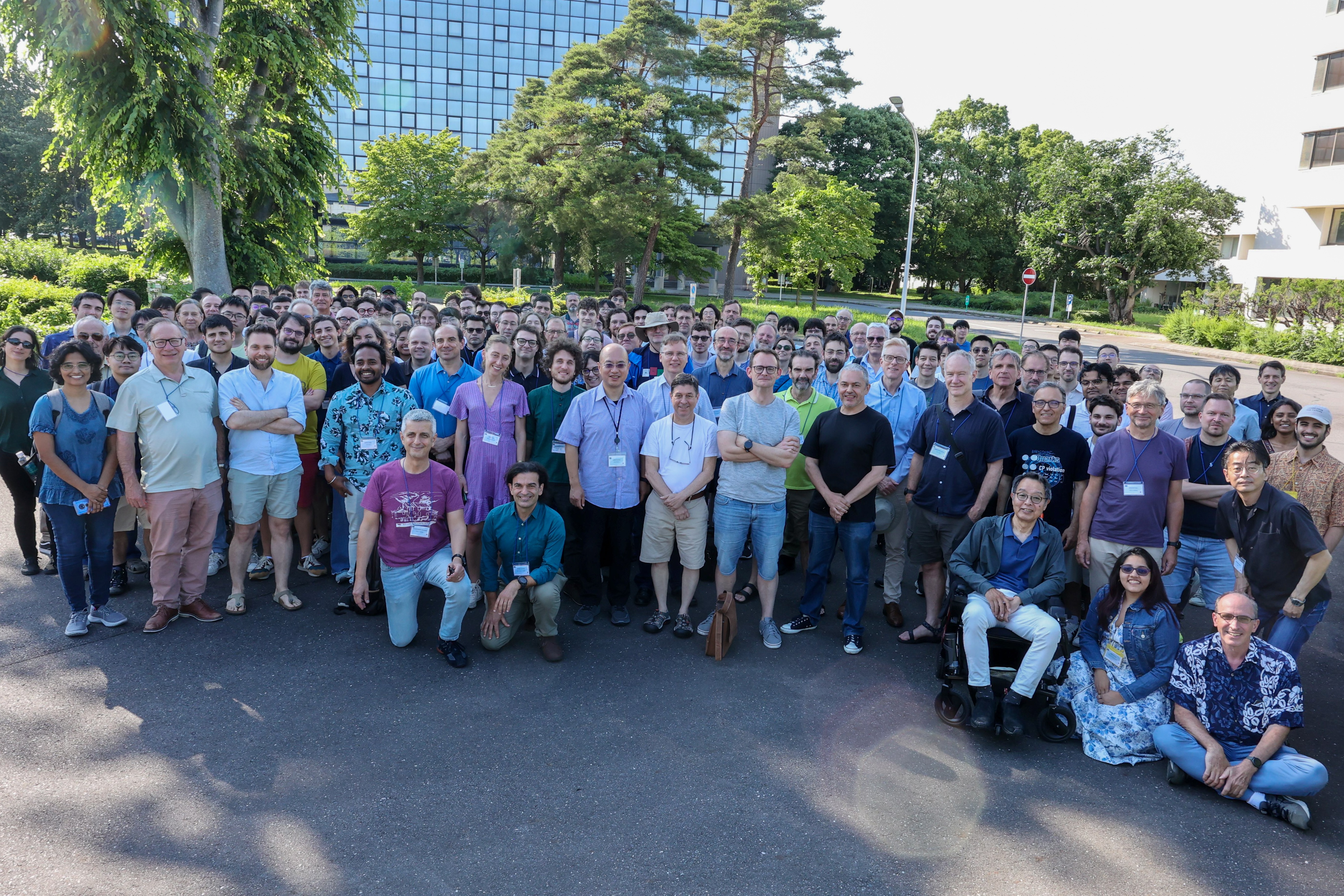The Belle II experiment aims to discover and study new physical phenomena that go beyond the known Standard Model of particle physics. Researchers at Belle II conduct precision measurements that complement high-energy physics experiments like those at CERN, which focus on direct searches for new physics.
Over the next two years, Belle II will record electron-positron collisions at an unprecedented luminosity. In particle physics, luminosity is a measure of how many collisions occur within a given time in a particle accelerator. In 2024, the SuperKEKB accelerator at KEK set a new world record in peak luminosity, achieving 5.1 × 10³⁴ cm⁻²s⁻¹. This high collision rate results in vast amounts of data—currently 575 fb⁻¹—which allows researchers to study physical processes with extreme precision and uncover hints of new physics hidden in the smallest deviations from the Standard Model.
One major focus of the research is the asymmetry between matter and antimatter in the universe. The very fact that we exist indicates that there must have been processes in the early universe that behaved differently for matter than for antimatter. The magnitude of this asymmetry still puzzles the scientific community.
Researchers are also searching for dark matter. While its gravitational effects have been observed astronomically, its composition remains unknown. If dark matter particles are produced in electron-positron collisions, they could be detected at Belle II through careful measurement of energy and momentum imbalances.
Bernlochner himself is deeply inspired by the possibilities of the experiment:
"What fascinates me is that we can search for new physical effects through highly precise measurements of very rare processes—opening windows into energy scales beyond the direct reach of the LHC. Belle II enables unique tests of fundamental interactions and contributes vital pieces to our understanding of the laws of nature."
Bernlochner has been a member of Belle II since 2013. After a postdoctoral position at the University of Victoria, he moved to Bonn in 2014, where he established an Emmy Noether junior research group in 2017. That same year, he was appointed to KIT (Karlsruhe Institute of Technology). Since 2019, he has been Professor of Experimental Particle Physics at the University of Bonn, where he leads the Belle II group.
As spokesperson, Bernlochner represents the Belle II Collaboration externally and is responsible for the scientific, technical, and organizational aspects of the collaboration.
"My most important task is to create the conditions for all Belle II members to reach their full potential—whether in physics analysis, software development, or detector operations and upgrade studies. At the same time, I represent the collaboration to KEK, funding agencies, and the public, and aim to further increase Belle II’s visibility and scientific impact," says Bernlochner.
He succeeds Karim Trabelsi from the IJCLab in France.
In Bonn, Bernlochner's group focuses on precision tests of the Standard Model and searches for signs of new physics in rare and semileptonic decays of beauty hadrons—particles that are abundantly produced in the Belle II experiment and also give it its name (French “belle” = “beautiful”). The Bonn team also develops new detector technologies for the planned Belle II upgrade. Alongside other German universities, the German Electron Synchrotron (DESY) in Hamburg, and the Max Planck Institute for Physics in Garching, they played a leading role in the development, characterization, and installation of the new pixel detector, the innermost part of Belle II, which was completed in 2024.
Belle II also plays a central role in the recently extended or newly approved German Excellence Clusters "ORIGINS" and “Color meets Flavor”.
“ORIGINS” explores the emergence of the universe and life—from the Big Bang to the first living organisms. Scientists from LMU Munich, TU Munich, the European Southern Observatory (ESO), the Leibniz Supercomputing Centre (LRZ), and five Max Planck Institutes are involved.
In “Color meets Flavor,” researchers from the University of Bonn collaborate with scientists from TU Dortmund, the University of Siegen, and the Jülich Research Center. The goal of the cluster is to study and better understand the processes of the strong (“color”) and weak (“flavor”) interactions between quarks.
Karim Trabelsi officially handed over the role of Belle II spokesperson to Bernlochner at the end of the 51st Belle II General Meeting in Japan on June 20, 2025.
"It is a great honor and responsibility to receive the trust of the collaboration and to lead this diverse, international community through the years ahead. I’m especially looking forward to tackling the scientific and technical challenges together with our members and preparing Belle II for its next phase," says Bernlochner.
At the same time, Thomas Kuhr of LMU Munich concluded his two-year term as Chair of the Institutional Board. He remains part of Belle II as a scientist and professor at LMU.
The next two years promise to be exciting for the experiment. In fall 2025, Belle II will begin a seven-month run. Researchers aim to achieve two main goals: increase the dataset to 1 ab⁻¹ and establish a path to stable data-taking at instantaneous luminosities of 10³⁵ cm⁻²s⁻¹. The top priorities are maintaining stable conditions and ensuring high-quality physics data.
The German working groups in the Belle II experiment are funded by the following institutions and programs:
- Alexander von Humboldt Foundation
- Federal Ministry for Research, Technology, and Space (BMFTR, formerly BMBF)
- German Research Foundation (DFG), especially through the Excellence Strategy of the German federal and state governments:
- “ORIGINS”: EXC-2094 – 390783311
- “Quantum Universe”: EXC-2121 – 390833306
- European Research Council
- European Union’s Horizon 2020 – grant agreement No. 101183137
- Helmholtz Association
- Max Planck Society





